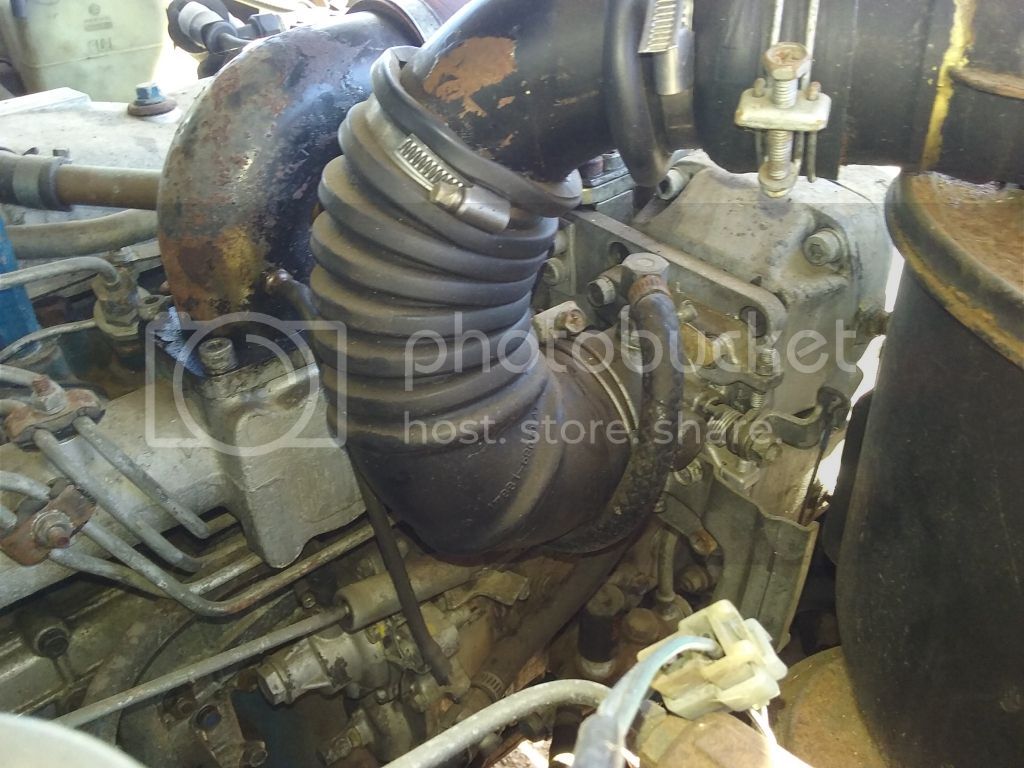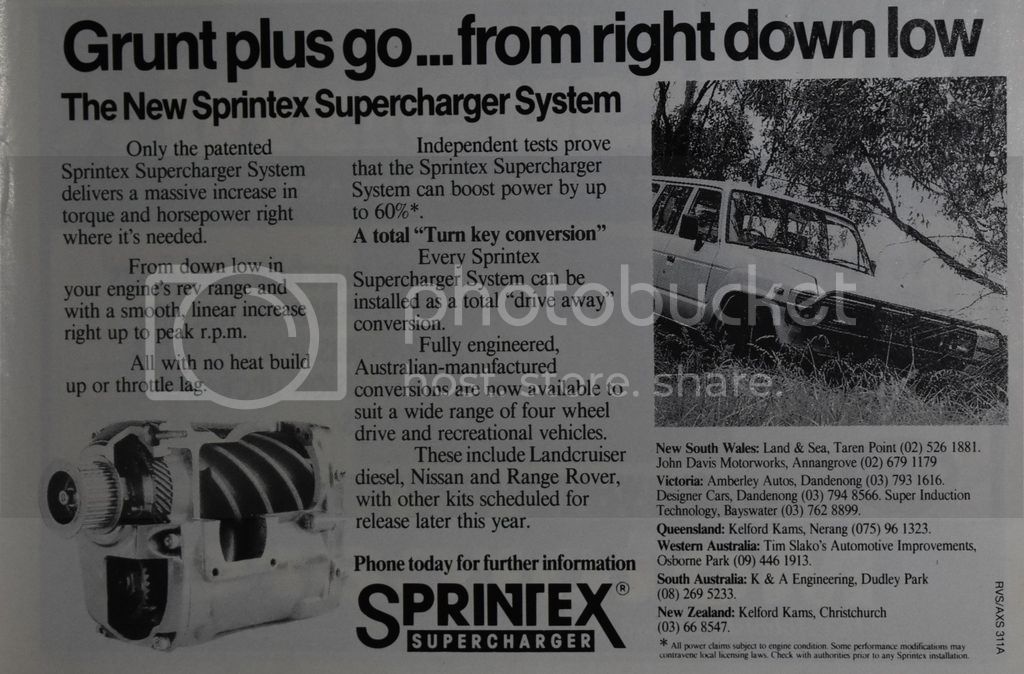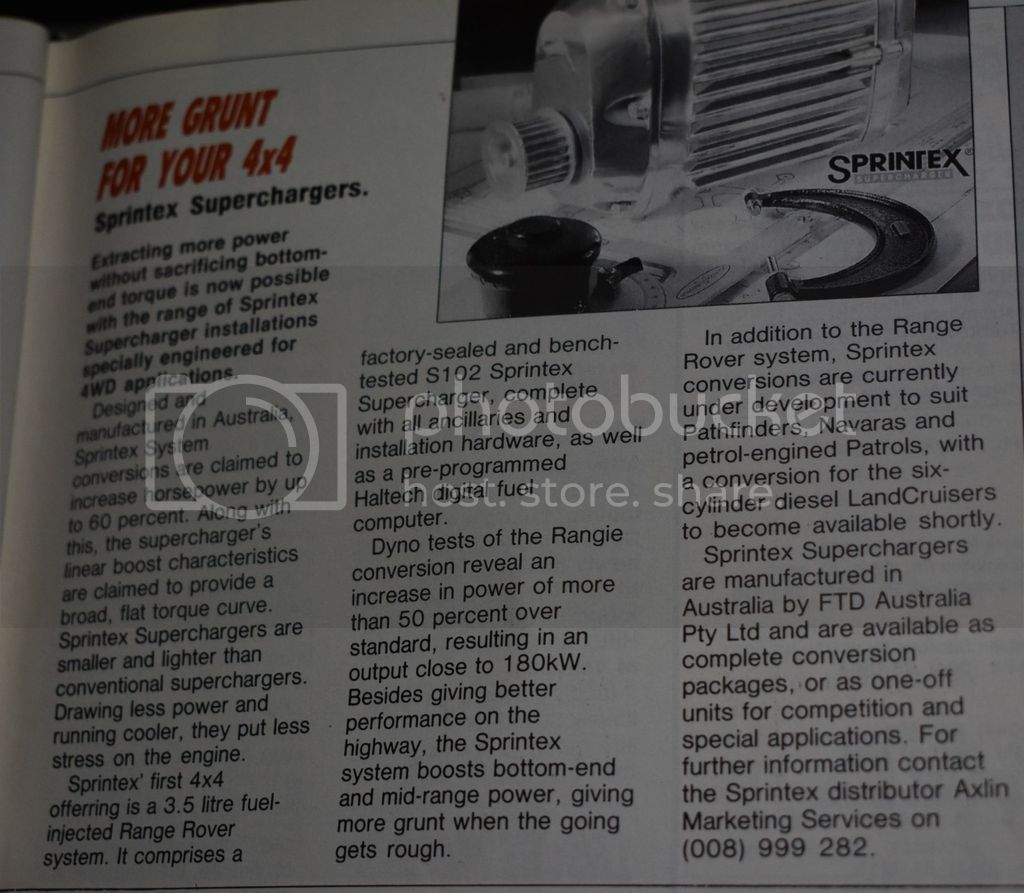Calm down this thread isn't as exiting as you were hoping. 
Some time ago I dropped into a wrecker and was quite surprised when I opened the bonnet of an unassuming beige HJ60 and found a freaking supercharger strapped to the side of the 2H.

I asked the wrecker what the story was and he said an old bloke had it, he had the motor rebuilt and supercharged to tow his caravan. It blew a headgasket so he moved on and parked the 60 up. He didn't know who supercharged it or what supercharger it was.
Interestingly, it runs the throttle body on the inlet side of the supercharger. I wonder if operating the supercharger in vacuum would lessen the drive power needed at part throttle? Like when you block the end of a vacuum cleaner and it speeds up because there is no air to pump/less load.

Today I picked up an old 4WDing magazine (1990) and was surprised to see this Sprintex supercharger advertisement.

And also this article. The supercharger is certainly a Sprintex.

(before the argument starts) Personally, I'm not that interested in supercharging a diesel due to obvious power losses and less efficient compressors. I just think people might find this interesting and worth documenting.
Does anyone know anything about Sprintex superchargers on the 2H? Did they ever offer a kit? They had a kit for 1HZs but I can't find anything on a 2H setup.
Some time ago I dropped into a wrecker and was quite surprised when I opened the bonnet of an unassuming beige HJ60 and found a freaking supercharger strapped to the side of the 2H.

I asked the wrecker what the story was and he said an old bloke had it, he had the motor rebuilt and supercharged to tow his caravan. It blew a headgasket so he moved on and parked the 60 up. He didn't know who supercharged it or what supercharger it was.
Interestingly, it runs the throttle body on the inlet side of the supercharger. I wonder if operating the supercharger in vacuum would lessen the drive power needed at part throttle? Like when you block the end of a vacuum cleaner and it speeds up because there is no air to pump/less load.

Today I picked up an old 4WDing magazine (1990) and was surprised to see this Sprintex supercharger advertisement.

And also this article. The supercharger is certainly a Sprintex.

(before the argument starts) Personally, I'm not that interested in supercharging a diesel due to obvious power losses and less efficient compressors. I just think people might find this interesting and worth documenting.
Does anyone know anything about Sprintex superchargers on the 2H? Did they ever offer a kit? They had a kit for 1HZs but I can't find anything on a 2H setup.
